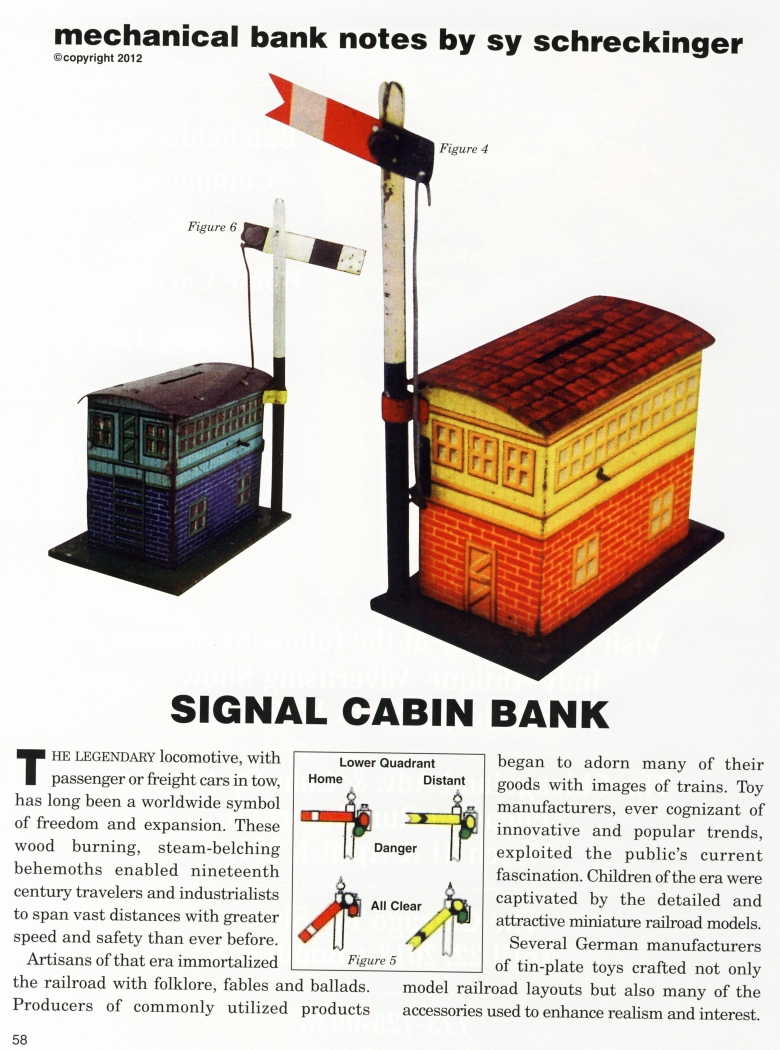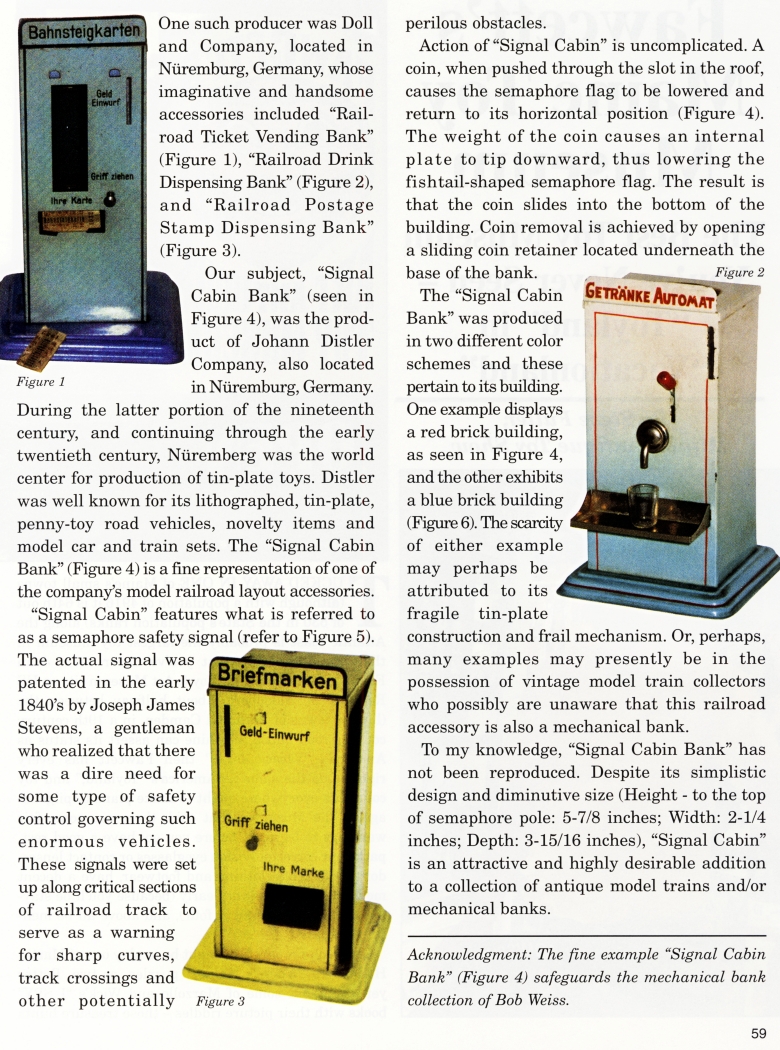|
Signal Cabin Bank
by Sy Schreckinger – ANTIQUE TOY WORLD Magazine – April, 2012
THE
LEGENDARY locomotive, with passenger or freight cars in tow,
has long been a worldwide symbol of freedom and expansion. These wood
burning, steam-belching behemoths enabled nineteenth century travelers
and industrialists to span vast distances with greater speed and safety
than ever before.
Artisans of that era immortalized the railroad with folklore, fables and
ballads. Producers of commonly utilized products began to adorn many of
their
goods with images of trains. Toy
manufacturers, ever cognizant of
innovative and popular trends,
exploited the public's current
fascination. Children of the era were
captivated by the detailed and
attractive miniature railroad models. Several German manufacturers
of tin-plate toys crafted not only
model railroad layouts but also many of the
accessories used to enhance realism and interest.
One such producer was Doll and Company, located in Nuremburg, Germany,
whose imaginative and handsome accessories included "Railroad Ticket
Vending Bank" (Figure 1), "Railroad Drink Dispensing Bank" (Figure 2),
and "Railroad Postage Stamp Dispensing Bank" (Figure 3).
Our subject, "Signal Cabin Bank" (seen in Figure 4), was the product of
Johann Distler Company, also located Figun, in Niiremburg, Germany.
During the latter portion of the nineteenth century, and continuing
through the early twentieth century, NUremberg was the world center for
production of tin-plate toys. Distler was well known for its
lithographed, tin-plate, penny-toy road vehicles, novelty items and
model car and train sets. The "Signal Cabin Bank" (Figure 4) is a fine
representation of one of the company's model railroad layout
accessories.
"Signal Cabin" features what is referred to as a semaphore safety signal
(refer to Figure 5). The actual signal was patented in the early 1840's
by Joseph James Stevens, a gentleman who realized that there was a dire
need for some type of safety control governing such enormous vehicles.
These signals were set up along critical sections of railroad track to
serve as a warning for sharp curves, track crossings and other
potentially Figure 3 perilous obstacles.
Action of "Signal Cabin" is uncomplicated. A coin, when pushed through
the slot in the roof, causes the semaphore flag to be lowered and return
to its horizontal position (Figure 4). The weight of the coin causes an
internal plate to tip downward, thus lowering the fishtail-shaped
semaphore flag. The result is that the coin slides into the bottom of
the building. Coin removal is achieved by opening a sliding coin
retainer located underneath the base of the bank.
The "Signal Cabin Bank" was produced in two different color schemes and
these pertain to its building. One example displays a red brick
building, as seen in Figure 4, and the other exhibits a blue brick
building (Figure 6). The scarcity of either example may perhaps be
attributed to its fragile tin-plate construction and frail mechanism.
Or, perhaps, many examples may presently be in the possession of vintage
model train collectors who possibly are unaware that this railroad
accessory is also a mechanical bank.
To my knowledge, "Signal Cabin Bank" has not been reproduced. Despite
its simplistic design and diminutive size (Height - to the top of
semaphore pole: 5-7/8 inches; Width: 2-1/4 inches; Depth: 3-15/16
inches), "Signal Cabin" is an attractive and highly desirable addition
to a collection of antique model trains and/or mechanical banks.
Acknowledgment: The fine example "Signal Cabin Bank" (Figure 4)
safeguards the mechanical
bank collection of Bob Weiss.
|


